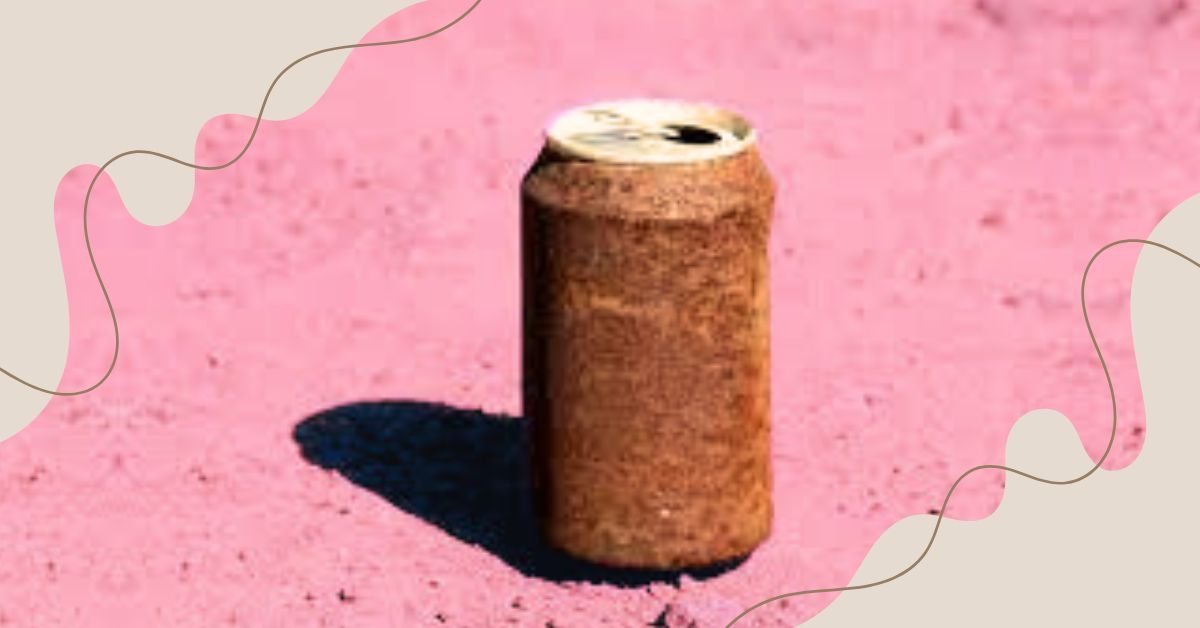Aluminum is a widely used metal known for its lightweight and corrosion-resistant properties. Many people wonder, “Does aluminum rust?” The answer is nuanced. Unlike iron, which rusts when it oxidizes, aluminum reacts differently. Understanding how aluminum interacts with its environment is essential for anyone using this versatile material.
What Is Aluminum Corrosion?
Aluminum corrosion is a natural process that occurs when aluminum reacts with environmental elements, particularly moisture and oxygen. Unlike iron, which rusts when it oxidizes, aluminum undergoes a different kind of chemical reaction. When exposed to air, aluminum quickly forms a thin layer of aluminum oxide, which acts as a protective barrier. This layer typically adheres strongly to the underlying aluminum, preventing further oxidation. However, if this layer is compromised—due to physical damage, extreme environmental conditions, or chemical exposure—aluminum can begin to corrode. Corrosion can manifest in various ways, including pitting, discoloration, or the formation of a chalky white powder. The rate of corrosion can depend on several factors, including humidity levels, temperature, and the presence of salt or other corrosive agents. Understanding aluminum corrosion is vital for industries that rely on aluminum products, as proactive measures can be taken to prevent deterioration. Regular inspections and maintenance can help identify any signs of corrosion early, allowing for timely interventions. By knowing how corrosion occurs, we can implement effective strategies to protect aluminum items, ensuring their longevity and structural integrity.
Does Aluminum Rust Like Iron?
The short answer to the question of whether aluminum rusts like iron is no. Rust is specifically the result of iron oxide formation, which occurs when iron reacts with oxygen and water. This process leads to the characteristic red-brown flaky substance that weakens the metal. In contrast, aluminum does not rust in the same manner. Instead, when aluminum is exposed to moisture and oxygen, it oxidizes to form aluminum oxide. This oxide layer is actually beneficial, as it adheres strongly to the surface of the aluminum and prevents further oxidation. While aluminum can corrode under certain conditions, it does not experience rust in the traditional sense. The protective aluminum oxide layer can sometimes become compromised, especially in harsh environments such as coastal areas or industrial settings. Factors like saltwater, high humidity, and contact with dissimilar metals can accelerate the corrosion process. It’s essential to recognize that while aluminum is highly resistant to rust, it is not entirely immune to corrosion. Proper maintenance, including regular cleaning and protective coatings, can help maintain aluminum’s integrity and prolong its lifespan. Understanding these differences can aid in the appropriate selection and care of aluminum products.
The Science Behind Aluminum Oxide
Aluminum oxide is a crucial component of aluminum’s resistance to corrosion. This compound forms when aluminum reacts with oxygen in the atmosphere, creating a thin, protective layer on the surface. This layer is typically only a few nanometers thick, yet it plays a significant role in preserving the aluminum beneath it. Unlike rust, which can flake off and expose more iron to the elements, aluminum oxide adheres tightly to the metal surface. This unique property means that once aluminum has oxidized, the layer effectively prevents further oxidation and corrosion from occurring. The formation of aluminum oxide is a rapid process, happening almost immediately upon exposure to air. Even though this layer is protective, it can be compromised by factors such as physical damage or exposure to aggressive chemicals. In such cases, the underlying aluminum can be exposed, leading to corrosion. The durability and effectiveness of the aluminum oxide layer make aluminum a popular choice in various applications, from construction to aerospace. Regular maintenance, including inspections for any damage to this layer, can help ensure the long-term performance of aluminum products, allowing them to retain their strength and aesthetic appeal.
Signs That Aluminum Is Corroding
Recognizing the signs of aluminum corrosion is essential for timely maintenance and repair. While aluminum is resistant to rust, it is not immune to deterioration. One of the first signs of corrosion is the appearance of a chalky white residue on the surface, which indicates the formation of aluminum oxide. This powdery substance is often a result of pitting corrosion, where small holes or pits develop on the surface due to localized corrosion. Discoloration is another common indicator, with the aluminum surface appearing dull or stained. In more advanced stages of corrosion, you may notice deeper pits or cracks, which can compromise the structural integrity of the aluminum. Environmental factors can accelerate these signs, especially in coastal areas where saltwater exposure is common. Regular inspection of aluminum products can help catch these signs early, allowing for effective remediation. Cleaning the surfaces and applying protective coatings can prevent further damage and extend the lifespan of aluminum items. By being vigilant and recognizing the early signs of corrosion, you can take proactive steps to maintain the quality and durability of aluminum products.
Factors That Cause Aluminum Corrosion
Aluminum corrosion can occur due to various environmental and physical factors. One of the most significant contributors is exposure to moisture and humidity. When aluminum is in a damp environment, it can lead to oxidation and eventual corrosion, particularly if the protective aluminum oxide layer is damaged. Saltwater is especially corrosive to aluminum; the salt accelerates the corrosion process, making it crucial to protect aluminum used in marine environments. Additionally, contact with dissimilar metals can create galvanic corrosion, where one metal corrodes faster than another due to electrochemical reactions. This is common when aluminum is in contact with materials like copper or steel. Chemical exposure is another factor; certain industrial chemicals can break down the protective oxide layer, leading to accelerated corrosion. Temperature fluctuations can also play a role, as extreme heat can degrade protective coatings, leaving aluminum vulnerable. Understanding these factors is essential for anyone using aluminum in construction, manufacturing, or any application. By recognizing potential risks, users can take appropriate measures to protect aluminum from corrosion, ensuring its longevity and effectiveness.
How to Prevent Aluminum Corrosion
Preventing aluminum corrosion requires a combination of good practices and protective measures. One of the most effective ways to protect aluminum is by applying coatings. Protective coatings, such as paints or sealants, can add an extra layer of defense against environmental elements. Anodizing is another popular method, where aluminum is electrochemically treated to thicken its oxide layer, significantly enhancing its corrosion resistance. Regular cleaning is also vital; dirt and debris can trap moisture against the surface, promoting corrosion. A simple solution of mild detergent and water can effectively remove contaminants without damaging the aluminum. Inspecting the surface for scratches or damages is equally important; any compromised area can lead to corrosion if not addressed promptly. Additionally, when working with aluminum in mixed metal environments, using isolating materials can prevent galvanic corrosion. In high-corrosion areas, consider using alloys designed for enhanced resistance. Implementing these preventive measures can greatly enhance the durability of aluminum products, ensuring they remain functional and visually appealing over time. By taking proactive steps, users can effectively minimize the risk of corrosion and extend the lifespan of their aluminum items.
The Role of Coatings and Treatments
Coatings and treatments play a critical role in enhancing the corrosion resistance of aluminum. One of the most common treatments is anodizing, which involves electrochemically oxidizing the aluminum surface to create a thicker layer of aluminum oxide. This process not only enhances corrosion resistance but also allows for dyeing, making anodized aluminum available in various colors. The thicker oxide layer formed during anodizing can withstand harsh environments better than untreated aluminum, making it an excellent choice for outdoor applications. Additionally, powder coating is another effective treatment that provides a durable finish while protecting the metal from environmental factors. This process involves applying a dry powder that is then cured under heat, creating a hard, protective shell over the aluminum surface. Both anodizing and powder coating help prevent physical damage and provide aesthetic appeal, making aluminum products more attractive. Furthermore, regular maintenance of these coatings is essential. Over time, they can wear down due to exposure to the elements or physical abrasion. Periodic inspections and touch-ups can ensure that aluminum remains well-protected against corrosion, thereby extending its lifespan and functionality in various applications.
Benefits of Using Aluminum in Construction
Aluminum has become a preferred material in the construction industry for numerous reasons. One of its most significant advantages is its lightweight nature, which makes it easier to transport and handle compared to heavier materials like steel. This can lead to reduced labor costs and increased efficiency during construction. Despite being lightweight, aluminum possesses a high strength-to-weight ratio, allowing it to support substantial loads without adding excessive weight to structures. Additionally, aluminum is inherently resistant to corrosion, making it suitable for various environments, from coastal areas to industrial sites. This resistance helps maintain the structural integrity and aesthetic appeal of buildings over time, reducing the need for frequent maintenance. Furthermore, aluminum is highly versatile; it can be extruded into various shapes and sizes, allowing architects and engineers to implement innovative designs. The material is also recyclable, contributing to sustainability in construction practices. As more industries aim to reduce their carbon footprint, aluminum’s recyclability and durability make it an attractive option. Overall, the benefits of using aluminum in construction make it a valuable material that balances performance, aesthetics, and environmental responsibility.
Aluminum vs. Other Metals
When comparing aluminum to other metals, several key differences emerge that highlight aluminum’s advantages. One of the most notable distinctions is weight; aluminum is significantly lighter than steel or iron, which can lead to easier handling and reduced shipping costs. This lightweight characteristic, combined with aluminum’s high strength-to-weight ratio, allows for more efficient designs without compromising structural integrity. While steel is strong, it is also prone to rusting, requiring protective coatings and regular maintenance. In contrast, aluminum’s natural corrosion resistance means it often requires less upkeep. Furthermore, aluminum’s ability to form a protective oxide layer enhances its durability in harsh environments, such as coastal or industrial areas. When it comes to aesthetics, aluminum can be easily finished, painted, or anodized to achieve various appearances. This versatility makes it suitable for architectural applications where appearance is essential. Additionally, aluminum is highly recyclable, which aligns with sustainable practices in manufacturing and construction. While other metals have their unique benefits, aluminum’s combination of lightweight properties, corrosion resistance, and aesthetic versatility makes it a highly desirable option in various applications.
Conclusion
In conclusion, while aluminum does not rust like iron, it is not entirely immune to corrosion. Understanding the differences between rust and aluminum corrosion is vital for proper maintenance and care. Aluminum forms a protective oxide layer that prevents further oxidation, but this layer can be compromised under certain conditions. Regular inspection and maintenance are crucial for detecting signs of corrosion early, ensuring the longevity and performance of aluminum products. By employing protective coatings, cleaning, and recognizing environmental factors that contribute to corrosion, users can effectively preserve the integrity of aluminum. Additionally, the numerous benefits of aluminum—such as its lightweight nature, strength, and recyclability—make it an ideal choice for various applications, particularly in construction. By following best practices and understanding aluminum’s properties, users can maximize its potential while minimizing the risks associated with corrosion.
FAQs About Aluminum Rust
- Can aluminum rust in saltwater?
Yes, aluminum can corrode in saltwater, especially if the protective oxide layer is damaged. Regular maintenance and protective coatings are crucial in such environments. - What are the best ways to clean aluminum?
Using a mild detergent mixed with water is the most effective method for cleaning aluminum. Avoid abrasive cleaners that can scratch the surface. - Is anodized aluminum rust-proof?
Anodized aluminum is highly resistant to corrosion due to the thicker protective oxide layer, but it is not completely rust-proof. Proper care is still necessary. - How long does aluminum last before corrosion?
With proper maintenance, aluminum can last decades. However, environmental factors like humidity and exposure to chemicals can affect its lifespan. - Can you paint aluminum to prevent rust?
Yes, painting aluminum can provide an additional layer of protection against corrosion. Using the right primer and paint designed for metal surfaces is essential for optimal results.










